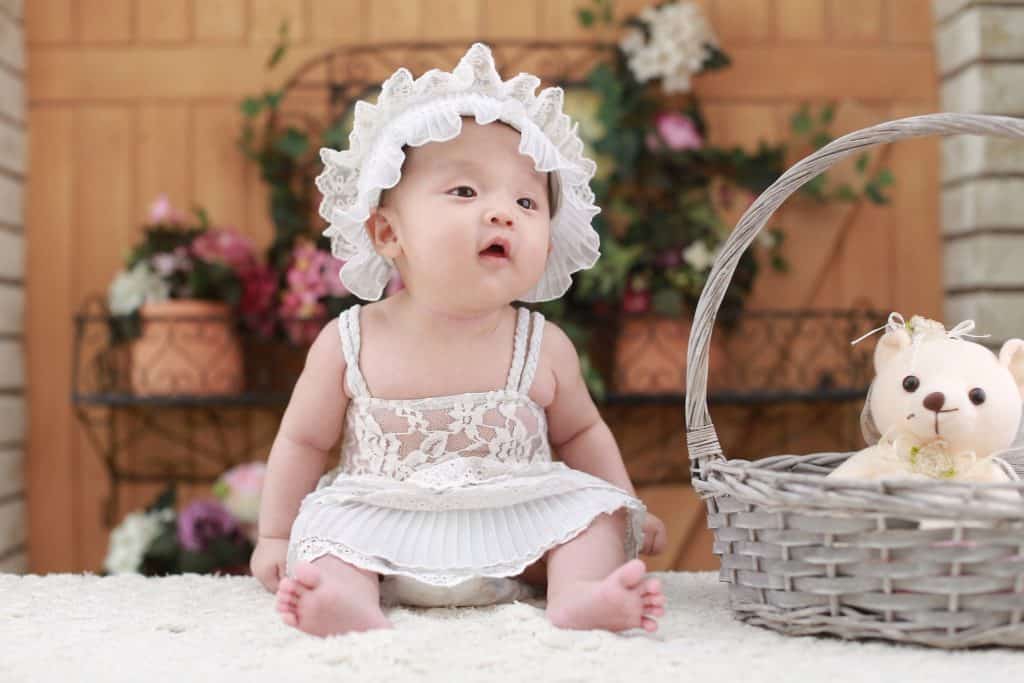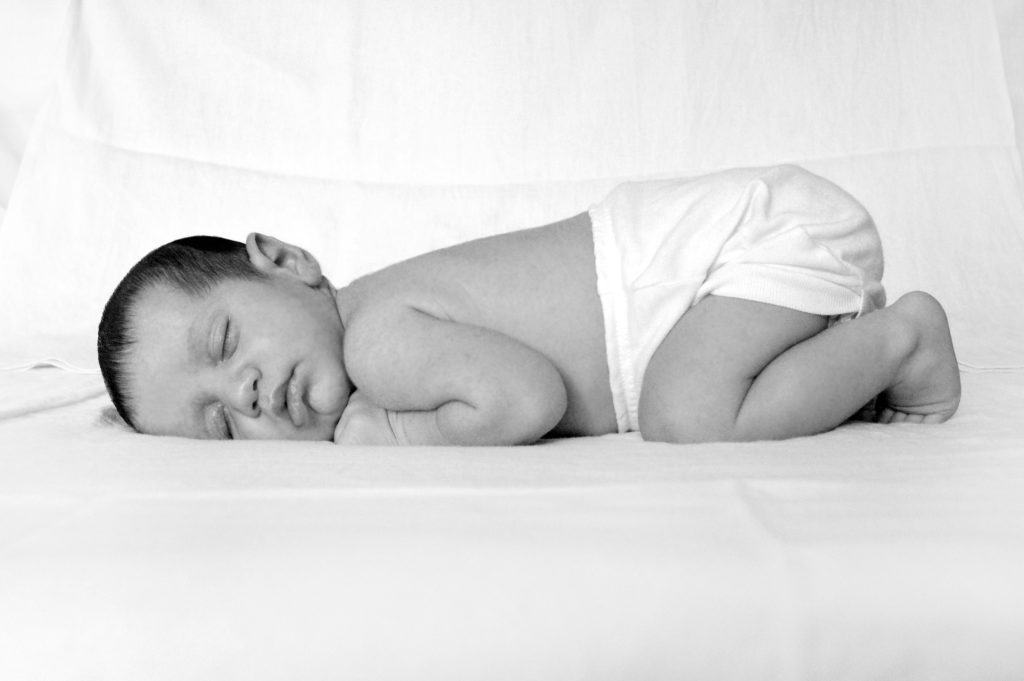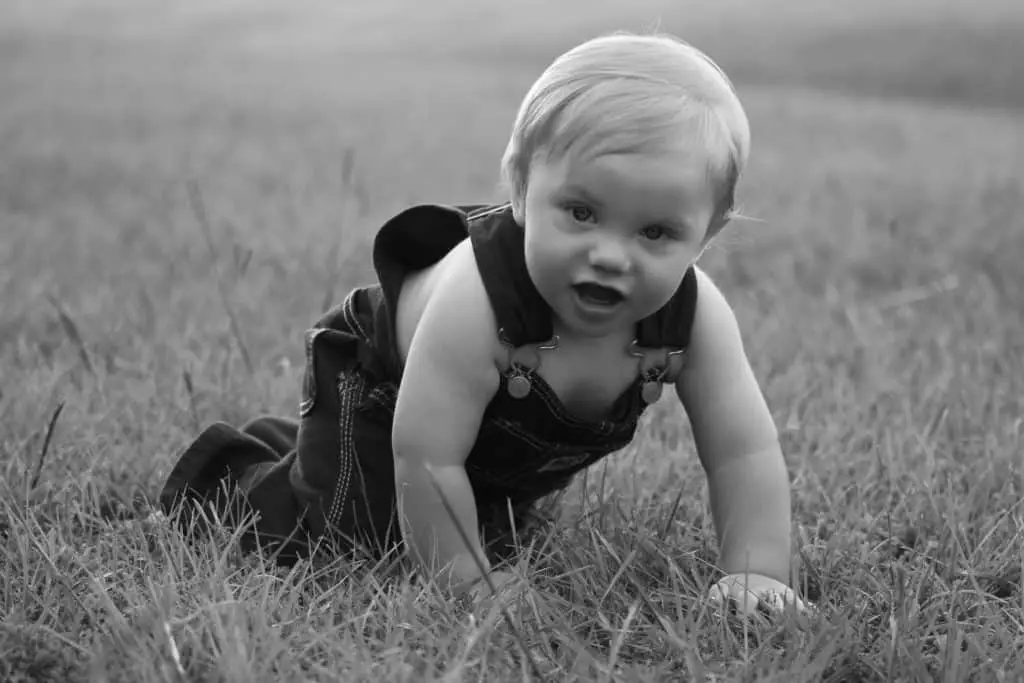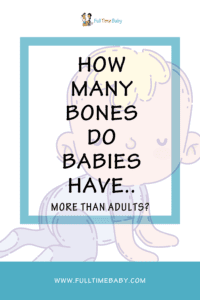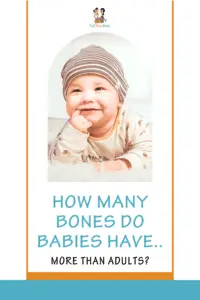‘Babies have no kneecaps’ is a popular piece of trivia, but is it true? and if so why?
Adults have 206 bones in their skeletons, including kneecaps, and being that babies are just smaller humans you’d be forgiven for thinking that their skeletal system was identical to that of a fully grown human. However, this is not the case; bone formation is a complex and ongoing process and makes allowances for different stages of physical development.
This article aims to answer the question of how many bones babies have, help you understand the process of bone development throughout childhood and provide some guidance on promoting healthy bone development.
Do babies have more or less bones than adults?
Babies skeletons are structurally quite different to adult skeletons, whether they have more or less bones than adults is difficult to say because it all depends on how you define what a ‘bone’ is!
What counts as a ‘bone’?
Babies are born with a lot of cartilage as part of their skeletons. Cartilage is a smooth, elastic type of tissue that is found in the ears, nose and rib cages of both adults and babies. It is not as strong and hard as bone, but neither is it soft and flexible like muscle. Cartilage is a kind of rubbery padding that covers the ends of bones at the joints. When babies are born much of their skeleton is made up of cartilaginous bones, which later fuse together and harden to make up parts of the adult skeleton as children grow and develop.
Kneecaps are a great example of this; babies are born with pieces of cartilage over their knees which can handle the pressure, movement and impact of learning to crawl and walk much more easily than hard bones. As children grow up these pieces of cartilage slowly harden and become kneecaps, or patella, that adults have.
So, initially at birth babies have only 176 “true” bones which resemble those of adults, whilst they have around 300 cartilaginous bones. Generally, cartilage is classified as ‘skeletal tissue’ and therefore part of the skeleton which would mean that babies have more bones than adults.
How do bones form in the womb?
Before babies are born their bones and cartilage must first form in the womb. The process is both complex and fascinating and shows just how well adapted the human body is. Having explained how babies are born with a lot of cartilage in their skeleton it is interesting to note that it is actually the entire skeletal structure which starts out as flexible cartilage. Some of this cartilage will harden whilst the baby is still in the womb as they absorb calcium from their mother throughout pregnancy, whilst some of the cartilage will remain and harden after birth.
Quite quickly after conception the process of building the skeletal system begins; the embryo develops 3 layers of cells. It is the middle layer, or mesoderm, that will become the baby’s bones and some organs such as the heart and kidneys.
By just 6 weeks pregnant, the baby has developed arm and leg buds, a clavicle, and parts of the backbone as well as the neural tube which will form parts needed for the spine and skull.
By the end of the first trimester significant skeletal development has already taken place, the baby has recognisable arms and legs with joints that move and bend and finger and toes.
After the first trimester the placenta begins to deliver calcium to the growing baby which helps to harden, strengthen and grow the bones. It’s important for expectant mothers to ensure that they are getting enough calcium as their bodies will prioritise providing the baby with this important nutrient, to the detriment of their own stores.
By the time the anomaly scan takes place at 20 weeks, the baby’s bones are visible via ultrasound, even though they’re still far softer than adult bones.
Why do babies have these soft bones?
You may wonder why babies have such soft bones being that they are already so vulnerable, but actually the vast amount of cartilage and softer bones serve a very good purpose. If babies were to have fully hardened adult-like skeleton, childbirth would be almost impossible! Infants bodies are soft so that their passage through the birth canal is much easier. The skull, in particular is designed to help with delivery; it is made up of separate plates of bones that can move and compress as the baby makes its passage through the birth canal. During birth the pressure of the birth canal can mould a baby’s head into an oblong rather than a round shape, this demonstrates how the ability of the plates to shift is advantageous, and usually wears off in around 24hours.
How do bones change throughout childhood?
As babies grow, some of the cartilage in their skeletons starts to harden and some bones start to fuse together. The skull, for example, which is specially designed for delivery, has a ‘soft spot’ or fontanelle towards the front and towards the back. As the baby grows their skull slowly begins to harden and it usually takes two to four months for the front “soft spot” (or fontanelle) to close and then up to 18 months or more for the back fontanelle to close. These bones do not fuse straight after birth to allow the baby’s skull to expand along with the brain, which grows very rapidly in early childhood and even after the soft spots close up there will still be flexibility for growth. Around the age of 2 or 3 the separate bones in the skull begin to fuse together but this process is not complete until adulthood to allow the head and the brain to continue growing.
The process of bones throughout the body hardening or ‘ossifying’ begins shortly after birth and continues until adulthood, around the age of 20. When a child stops growing around this age, their bones have mostly finished hardening and fusing together and the adult skeleton is complete.
How to keep bones healthy
Keeping babies and children’s bones healthy can mostly be achieved through diet and exercise, but if you have any particular concerns about your child’s bones you should always consult with a healthcare professional.
In order to grow properly babies and children’s bones need the right amounts of vitamins and minerals. Breastmilk is perfectly tailored to babies needs and will ensure that a baby receives the vitamins and minerals they need to grow strong healthy bones. Formula milk is also fortified with vitamins and minerals to ensure that babies have all they need to grow and develop as they should.
Vitamin D is an important mineral for the growth and development of strong, healthy bones as it helps the body to absorb calcium which is needed to strengthen the bones and fuse them together. Formula milk has vitamin D added to ensure that babies receive an adequate amount.
Vitamin D is also created by the body when sunlight touches the skin, but depending on where in the world you live if you are breastfeeding supplementing may be advised as in some countries the sunlight is not strong enough for people to receive an adequate amount of vitamin D this way, so check your national health body’s recommendations for vitamin D supplementation.
Once your child starts to eat solid foods around the 6-month mark, you can bolster their intake with nutrient dense foods. Foods containing vitamin D include: fortified breakfast cereals, drinks fortified with vitamin D like orange juice, some dairy products such as cheese, eggs and fatty fish such as salmon and tuna. Foods rich in calcium include; milk, cheese and other dairy foods, green leafy vegetables – such as broccoli, cabbage and okra, soya beans and tofu.
Alongside a diet rich in the right vitamins and minerals exercise and physical activity is also important for developing strong health bones in both babies and children. Physical activity helps the bones to strengthen in response to physical demand.
Before babies start walking, they are still able to get adequate physical activity with your help; laying the baby on their back helps them to practice moving their arms and legs around. Tummy time, where you lay your baby on their tummy and encourage them to move their head up, is great not only for strengthening muscles but also encouraging bone development.
Using toys to encourage movement such as reaching, grasping and pulling helps to promote bone development and growth through exertion. You can also use toys to motivate your child to roll over, and begin to move by scooting, crawling or pulling themselves along. These actions put demands on the bones and they begin to hard as a result.
Swimming is a great form of physical exercise for developing healthy muscles and bones. It is also the only sport that can potentially save your child’s life, and most babies enjoy splashing and kicking about in water so it may be worth investing in some baby swim classes or just visiting your local pool.
A good balance of nutrition and exercise will keep your baby or child’s bone development on track, and ensure that their bones grow, strengthen and harden as they should.
